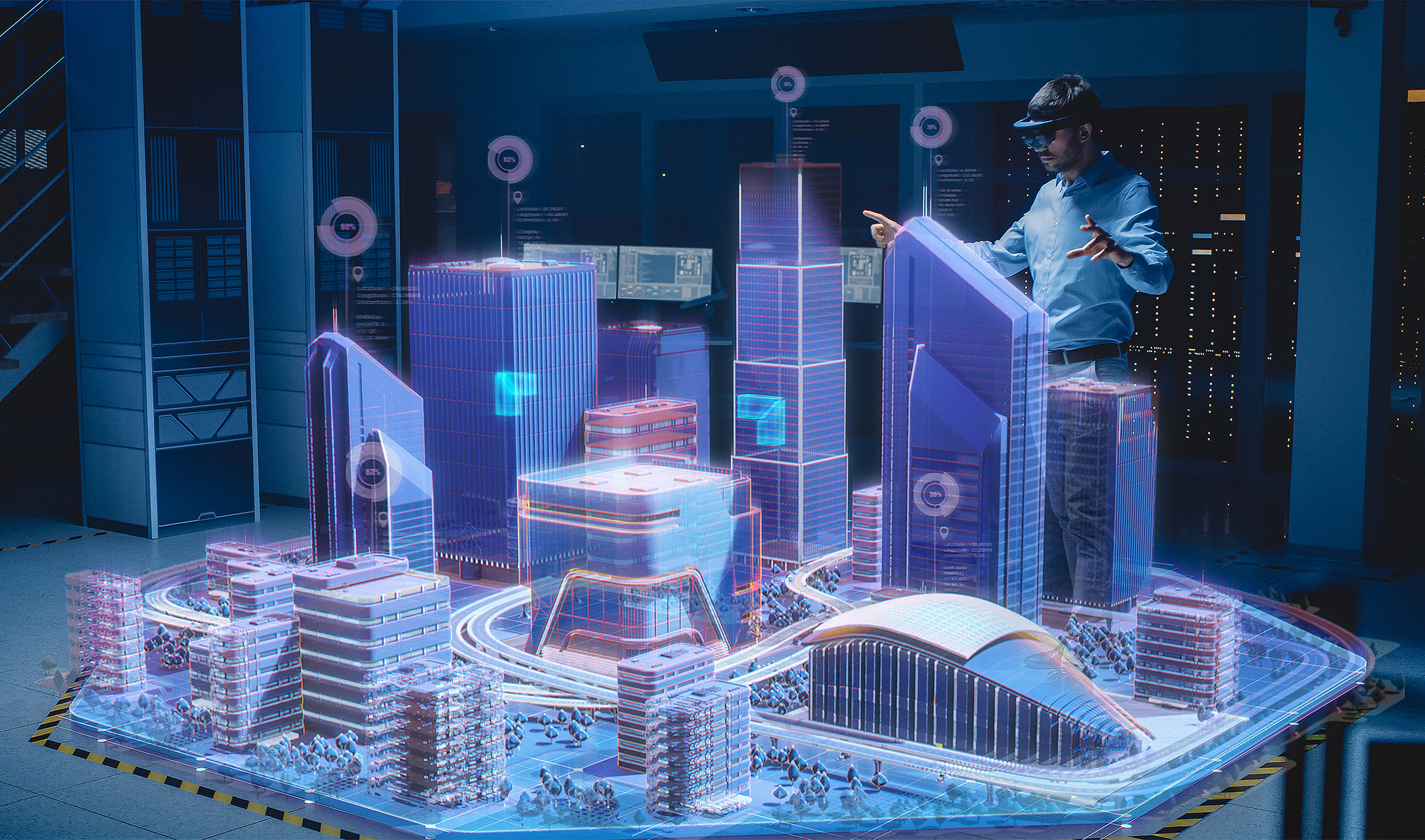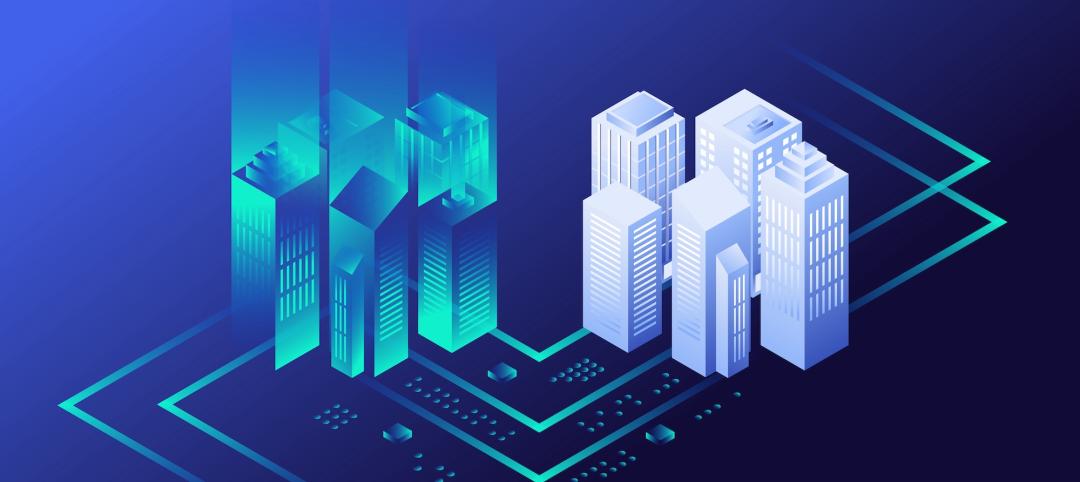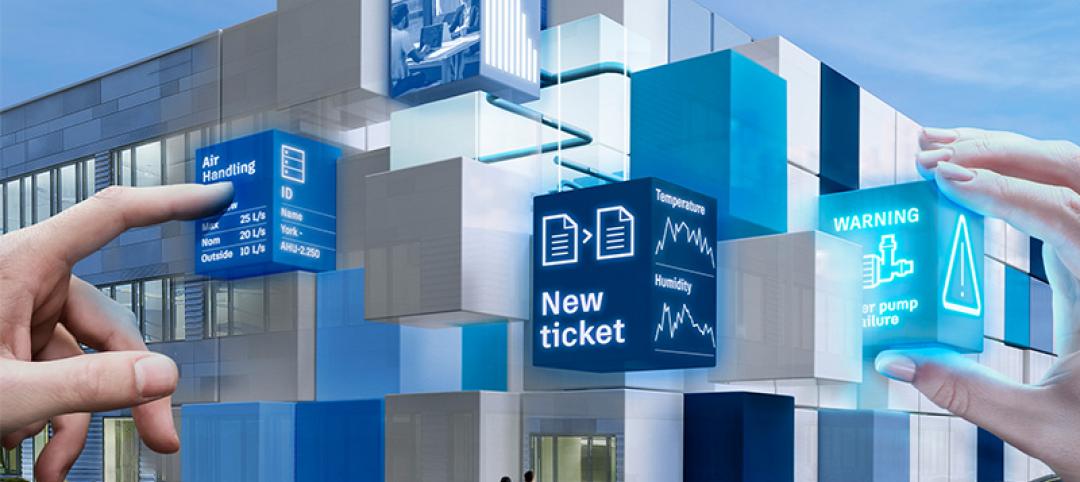The elusive “digital twin.” A virtual space that doesn’t quite live in the metaverse, but is definitely more than just your average BIM model. While their use cases are continually developing, a growing number of AEC firms and building owners are finding value in implementing digital twins to unify design, construction, and operational data.
But what are the benefits, both by sector and overall? And where do architects, engineers, and construction professionals fit in?
AEC Firms Engaging With Digital Twin Tools
A digital twin is the digital replica of a physical building that holds its information in one place—like a “shoebox.” Though they can be two-dimensional or 3D, digital twins offer a tell-all locale for a facility’s systems, from electrical work to its structural layout. More importantly, digital twins pave the way for analytics-driven action.
With some building owners beginning to include digital twin requirements in project RFPs, AEC firms are beginning to build digital twins for their clients, according to Robert Bray, VP and General Manager, Autodesk Tandem.
“This is creating new business opportunities for AEC firms, driving meaningful conversations about outcomes and data, and is creating the potential for longer term engagements with their clients,” says Bray.
As AEC firms engage with building digital twins, they can help advance their clients’ initiatives like monitoring and meeting sustainability goals—as well as gain knowledge to plan, design, and build better themselves in the future.
Artificial intelligence
With the influx of artificial intelligence-influenced workflows, digital twins could soon be getting smarter as well. Predictive models might analyze construction data or building conditions to better manage assets, according to Tiago Ricotta, Customer Experience Team Manager at Trimble, an industrial technology company.
“This could give really good inputs for early conceptual design,” he adds.
Digital twins as a live link
For an organization looking to create a digital twin for its building—or AEC firms beginning to build digital twins for their clients—clear objectives should first be set. Without this, it can be difficult to establish what level of detail is needed and whether or not there will be a live link between the model and real life.
“A digital model that nobody accesses or that doesn’t provide information doesn't have many purposes,” says Ricotta. “It should be designed in a way that helps gather the information that will help people understand and use the data it provides.”
This data could track systems in the building, like water and energy usage, with sensors installed that connect it to the digital twin. The twin can map out areas for maintenance teams, providing vision and training before entering restricted/dangerous areas. Other insights from discovering potential issues to reviewing trends would be consolidated into one place—making the digital twin a one-stop shop for facility management.
Enhancing User Experience for Digital Twin Users
While the benefits behind the scenes are plentiful, one of the biggest advantages of buildings with a digital twin is enhancing the user experience for its occupants. Currently, corporate offices are the largest sector that has embraced digital twins. However, we’re seeing use cases in hospitals and retail environments begin to grow, according to Morten Brøgger, CEO of MapsPeople, an indoor mapping tech company.
Digital twin uses across builder sectors
Across multiple sectors, digital twins can help people connect with space. Some practical examples include:
- Stadium parking. Attending fans have the ability to book a parking space from their phone, and can plan their route inside the stadium before they’ve even left the house.
- Airport traversal. Airline travelers can receive real-time airport updates as they’re walking to their gate, from restaurant wait times to flight ETAs.
- Preserving historic buildings. Through Historic Building Information Modeling (HBIM), detailed 3D models of historic buildings aid in preserving heritage, community spaces, and future renovations.
- Navigating large buildings. Walking through hospital wings, university buildings, or convention center show floors could be made easier with indoor mapping.
- Hotels. Hotels can offer accessible routes and services to guests with special mobility needs.
- Corporate office layouts. In a hybrid work-from-home world, employees who may be less familiar with their office’s environment could get a helping hand from digital twins.
- Retail spaces. Retailers can empower shoppers to find products more quickly.
The end goal? Help facility owners and its stakeholders to rectify issues before they become problems, and make decisions based on data rather than guesswork.
Related Stories
Digital Twin | Aug 21, 2024
Digital twins: Transforming operations for greater efficiency
While efforts to improve building efficiency have been iterative, recent advancements have significantly enhanced the interaction between facility managers, building owners, and their facilities.
AEC Innovators | Apr 26, 2024
National Institute of Building Sciences announces Building Innovation 2024 schedule
The National Institute of Building Sciences is hosting its annual Building Innovation conference, May 22-24 at the Capital Hilton in Washington, D.C. BI2024 brings together everyone who impacts the built environment: government agencies, contractors, the private sector, architects, scientists, and more.
AEC Tech | Mar 9, 2024
9 steps for implementing digital transformation in your AEC business
Regardless of a businesses size and type, digital solutions like workflow automation software, AI-based analytics, and integrations can significantly enhance efficiency, productivity, and competitiveness.
AEC Tech | Feb 28, 2024
How to harness LIDAR and BIM technology for precise building data, equipment needs
By following the Scan to Point Cloud + Point Cloud to BIM process, organizations can leverage the power of LIDAR and BIM technology at the same time. This optimizes the documentation of existing building conditions, functions, and equipment needs as a current condition and as a starting point for future physical plant expansion projects.
AEC Innovators | Feb 28, 2024
How Suffolk Construction identifies ConTech and PropTech startups for investment, adoption
Contractor giant Suffolk Construction has invested in 27 ConTech and PropTech companies since 2019 through its Suffolk Technologies venture capital firm. Parker Mundt, Suffolk Technologies’ Vice President–Platforms, recently spoke with Building Design+Construction about his company’s investment strategy.
AEC Tech | Jan 8, 2024
What's driving the surge of digital transformation in AEC today?
For centuries, the AEC industry has clung to traditional methods and legacy processes—seated patterns that have bred resistance to change. This has made the adoption of new technologies a slow and hesitant process.
Digital Twin | Jul 31, 2023
Creating the foundation for a Digital Twin
Aligning the BIM model with the owner’s asset management system is the crucial first step in creating a Digital Twin. By following these guidelines, organizations can harness the power of Digital Twins to optimize facility management, maintenance planning, and decision-making throughout the building’s lifecycle.
Digital Twin | Jul 17, 2023
Unlocking the power of digital twins: Maximizing success with OKRs
To effectively capitalize on digital twin technology, owners can align their efforts using objectives and key results (OKRs).
Digital Twin | Nov 21, 2022
An inside look at the airport industry's plan to develop a digital twin guidebook
Zoë Fisher, AIA explores how design strategies are changing the way we deliver and design projects in the post-pandemic world.
Sponsored | Digital Twin | Jun 24, 2022
Pave the way for better business relationships with digital twins
















